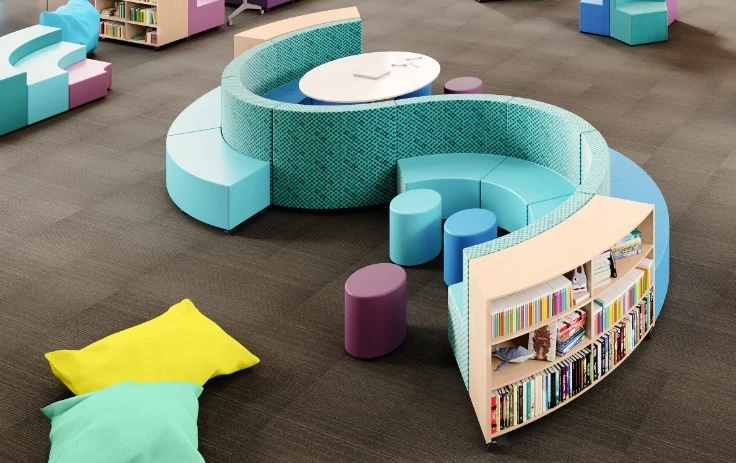When purchasing furniture for your library from library furniture suppliers, there are some important considerations you need to keep in mind. Libraries are looking to improve and offer great spaces for students and staff. Technology is always changing and there are a lot of facets to library design that interiors of libraries are always evolving. Some of the most common trends in designing libraries are illustrated here.
Light and airy open spaces
Open spaces are being emphasised in building designs for both existing and new libraries. Sustainable practices and the trend for healthier lifestyles have significantly driven the demand for natural light and outside views. You can achieve this by adding or building larger windows for more daylight to come in. You may also need to consider sunshade devices depending on façade exposure.
You can also consider adding interior windows or glass partitions to bring light farther into your building whilst allowing sound separation. Lower the shelving of your library to extend natural light father into the building. Use floor pattern changes instead of using walls to designate or highlight important areas.
Unfixed flexible spaces
It is important to design spaces with flexibility in mind to support various aspects of successful library design. Provide fewer or no in-built computer stations and service counters. Instead, opt for modular educational furniture pieces to accommodate these functions and allow future reconfiguration with minimal cost and disruption.
You should also consider fewer fixed personal computer stations and add more tablet or laptop dispensers. This will create enough space for powered study tablets that can be used by a wide range of patrons.
Use mobile service points to allow staff members to occupy areas of the library during times of peak use. Use shelving and furniture to designate spaces without walls. Install lower shelves to make it easier for wayfinding as well as oversight. Mobile furniture and shelving will provide a great solution for multi-purpose space needs, such as children’s and teen areas.
Power connection
Power demands continue to increase across the board and are very important to consider. Because of the emerging technologies, locations where electronic devices are being used change continually and this creates a demand for multiple types of power access: charging stations, power tables, wireless charging areas, and powered lounge furniture.
Whether building new or renovating, planning for data and power infrastructure is important to keep up with the ever-changing demands in a cheap way.
Raised access floor systems
You should use these for new construction to incorporate data, power, and mechanical systems under the floor panels. A system like this allows these useful components to be relocated without doing major construction.
Study and collaboration spaces
These spaces are in high demand and should be created with the right furniture from library furniture suppliers. A lot of library designs incorporate rooms for group study spaces and collaboration. Manufacturers produce great solutions for a wide range of needs. Moveable walls or demountable partitions work great for maker spaces with accessible panels for changing technology upgrades; acoustic separation and study rooms that come with writable marker board walls.


